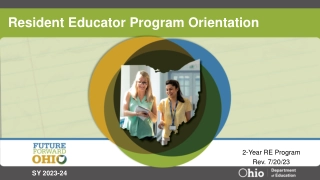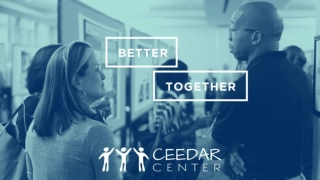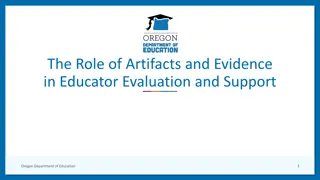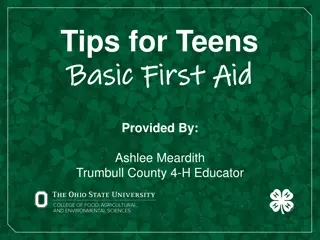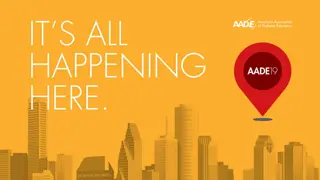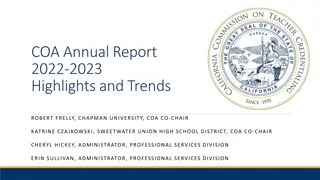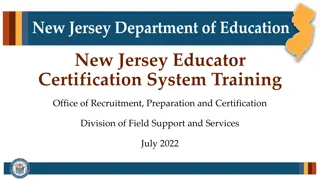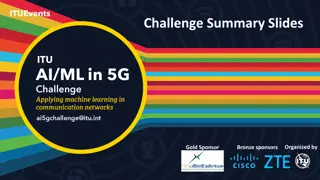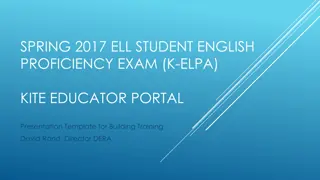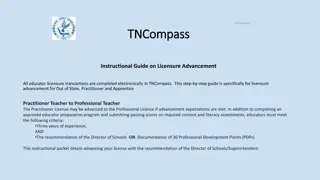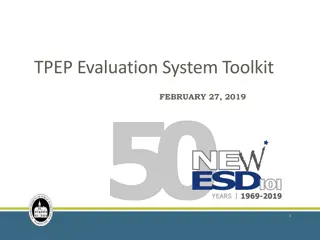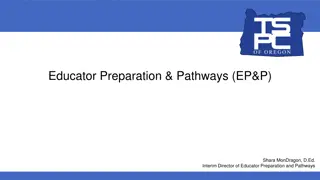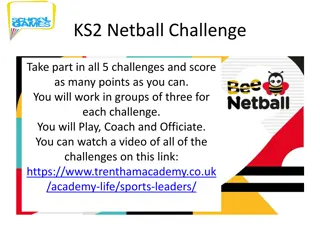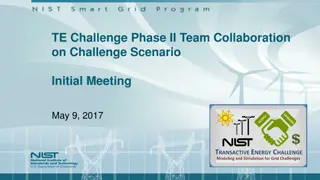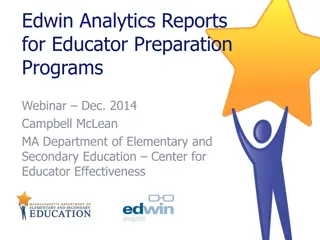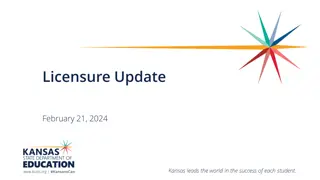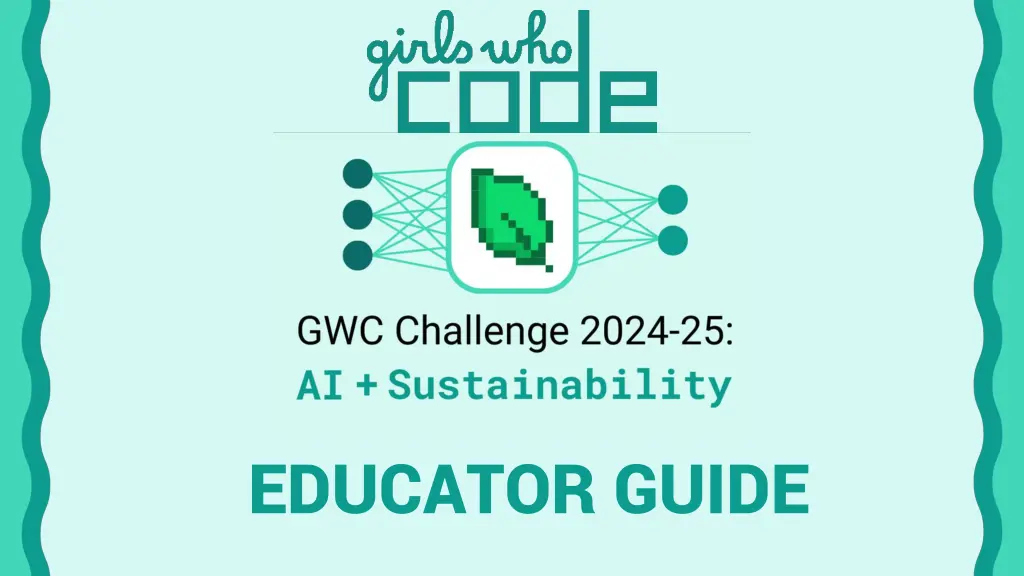
Engage Students in the GWC Challenge 2024-25: Educator Guide & Resources
Discover how to guide students through the Girls Who Code Challenge 2024-25 focused on AI and sustainability. This educator guide provides tools, resources, and a flexible framework for implementing the challenge in educational settings.
Download Presentation

Please find below an Image/Link to download the presentation.
The content on the website is provided AS IS for your information and personal use only. It may not be sold, licensed, or shared on other websites without obtaining consent from the author. If you encounter any issues during the download, it is possible that the publisher has removed the file from their server.
You are allowed to download the files provided on this website for personal or commercial use, subject to the condition that they are used lawfully. All files are the property of their respective owners.
The content on the website is provided AS IS for your information and personal use only. It may not be sold, licensed, or shared on other websites without obtaining consent from the author.
E N D
Presentation Transcript
WELCOME TO THE GWC CHALLENGE 2024-25! Theme and Prompt Theme: AI + Sustainability Prompt: Build a project that explores how people can use AI to create a more sustainable future. What is the GWC Challenge? The Girls Who Code Challenge is an annual competition that invites students to create innovative projects around a specific theme. Key Details Prizes: Middle School (13-14): Three $250 gift cards High School (15-18): Three $500 gift cards All winners receive GWC swag and a project spotlight on GWC social media Note: You can work in groups, but only one person should submit. If you are working in a group, please read the full FAQ. Eligibility: Open to anyone based in the US aged 13-18 Participation: Work independently or in groups Deadline: February 12, 2025, by 11:59 PM ET Winners Announced: Late March 2025 Is This Right for My Class? This challenge is perfect for classes that: Are interested in exploring AI and sustainability Want to engage in project-based learning Aim to develop creative problem-solving skills Seek real-world applications of technology Have 3-6+ sessions to dedicate to the project Whether you're teaching computer science, environmental studies, or looking for an interdisciplinary project, the GWC Challenge offers a flexible framework to inspire and challenge your students!
ABOUT THIS EDUCATOR GUIDE What is this guide? We have designed this resource to be flexible for any educator who wants to run the GWC Challenge with students during the school day or in informal learning spaces. Goals of the Guide By the end of this guide, educators should be able to: 1. Understand the Challenge: Gain a clear understanding of the GWC Challenge, its theme, and requirements. 2. Plan Effectively: Create a customized plan to implement the Challenge, whether you have 3, 4-5, or 6+ sessions available. 3. Facilitate Learning: Guide students through the design process, from research and brainstorming to prototyping and reflection. 4. Support AI Integration: Help students understand and responsibly incorporate AI into their sustainability projects. 5. Promote Creativity: Encourage students to think critically and creatively about using technology to address real-world problems. 6. Ensure Project Completion: Guide students through the submission process, ensuring all requirements are met. 7. Foster Inclusivity: Create an inclusive environment that supports all students in participating fully in the Challenge. This guide provides the tools and resources you need to successfully implement the GWC Challenge in your educational setting, regardless of your prior experience with AI or sustainability topics.
GETTING STARTED GETTING STARTED
ABOUT THIS GUIDE The guide is divided into two main sections: planning and implementation slides. 1. The planning slides will help you determine the best way to organize your classroom time for Challenge project development. 2. The implementation slides are for you to use directly with students. This repository contains slides for: Meeting Essential Slides: agenda, session goal, and wrap up slide templates GWC Challenge Overview Slides: a student-facing introduction to the GWC Challenge Design Process: Step-by-step guidance to build a project using the design process of research, brainstorm, define, prototype, test and iterate, reflect Project Submission: A walk-through of the submission process on the GWC website. We made these so you don t have to! You can copy and paste the ones you need, then use as is or adapt as needed. All slides contain speaker notes to make your facilitation easier.
WAYS TO USE THIS GUIDE 1. Familiarize yourself with the challenge, then develop your own planning tools and resources to implement the challenge with students. Recommended for more experienced educators with additional time. 2. Determine the number of sessions you can run with students, then copy and paste the relevant implementation slides to create each meeting session presentation. Recommended for new educators with less time. 3. Familiarize yourself with the challenge, then have your students work through the Participant Guide independently. 4. Somewhere in between! Tailor these to meet your needs by adapting slides and resources.
PLANNING PLANNING
CONSIDERATIONS As you begin planning how to incorporate the GWC Challenge into your group, here are some guiding questions to get you started: How many sessions do you have? What is the duration of each session? This will help you plan activities and set realistic goals for each meeting. How many participants are in your group? What is the range of skills and experience levels among your participants? This will help you plan for differentiation and support. What are your members interested in? What platforms or languages do they know or like using? Are there any specific sustainability issues that are particularly relevant or interesting to your local community? This could provide context for projects. Will participants work individually or in small groups? If working in groups, how will you form teams to ensure a mix of skills and interests? Consider how to balance teams effectively. What tools and resources do you have available to you? Do you have access to any local experts in AI or sustainability who could serve as guest speakers or mentors? This could provide valuable real-world insight for your students. What is the prior knowledge of your participants regarding AI and sustainability? How much time might you need to dedicate to teaching foundational concepts before diving into project work? Will students use generative AI? While using GenAI is an option, it's not a requirement for the GWC Challenge it is one of many tools you can choose to explore. We ve included AI Usage Guidelines below. Key Dates: Tuesday, October 1, 2024: GWC Challenge Launch Wednesday, February 12, 2025: GWC Challenge Deadline (11:59 pm ET) Tuesday, March 25, 2025: Winners Announced 8
CHOOSE YOUR SESSION STRUCTURE Meeting Schedules The GWC Challenge is designed to be flexible, accommodating various time frames and learning environments. Here's a guide to help you choose the best structure for your group. Full meeting outlines can be found in the Appendix. 3 Sessions -Best for tight schedules or as an introduction to project-based learning Ideal if you have limited time but still want to give students a complete project experience. Suitable for groups with some prior knowledge of AI and sustainability. Requires more independent work from students between sessions. 4-5 Sessions -Recommended for most groups Provides a balanced approach, allowing adequate time for each phase of the design process. Suitable for groups with mixed experience levels. Offers more in-session work time and opportunities for guidance. 6+ Sessions -Ideal for in-depth exploration Best for groups that can dedicate significant time to the challenge. Allows for deeper dives into AI concepts and sustainability issues. Provides ample time for multiple iterations and refinement of projects. 3 Session 4-5 Sessions 6+ Sessions 1: Overview & Research & Brainstorm 2: Define & Prototype & Test + Iterate Final: Reflect, Finalize & Upload 1: Overview & Research & Brainstorm 2: Define & Prototype 3+: Test + Iterate Final: Finalize & Upload 1: Overview & Research 2: Brainstorm & Define 3: Prototype & Test 4+: Prototype & Test + Iterate Final: Finalize & Upload 9
HOW TO USE IMPLEMENTATION SLIDES Once you ve chosen your session structure: 1. Choose process phase(s) for your session Intro, Research, Brainstorm, Define, Prototype, Test & Iterate, Reflect, Finalize & Upload 1. For each phase: Select the transition and introductory slide for that phase (the first two in the slide group) Choose one activity slide (if multiple options are available) 1. Create your session deck: Copy the selected slides into a new presentation Also copy over the Agenda, Goals, and Stand Up and Wrap Up slides. Remove any unused slides 1. Customize slides as needed: Feel free to modify the order or content of slides to best suit your group's time, needs and interests. 1. Review facilitator notes for each slide: Familiarize yourself with key points and discussion prompts 1. During the session: Use the introductory slide to explain the phase Guide students through the chosen activity Encourage discussion and reflection throughout
MEETING GUIDE Before meeting Review planned activities for the session Select relevant slides (include Agenda, Goals, and Stand Up Slides) Copy slides into a new deck and customize for your group Adjust Meeting Agenda and Goals slides Update Wrap-Up slide with reminders Delete unused slides from Appendix Review Virtual Facilitation Tips (if applicable) Prepare and gather materials: Slides Speaker and Projector Computers with internet access Optional: Poster Paper for Challenge Team Agreements Optional: Spotify Lofi Beats Playlist For in-person meetings, set up your space: Post agenda and goals visibly Test projector and/or speaker Test computers for login and internet access After meeting Reflect on the meeting and note potential changes Begin preparing for the next meeting using the Plan Your Challenge Team Meeting Guide on HQ Locate slide templates for the next meeting Remember Adjust these checklists based on whether it's your first, subsequent, or final meeting of the Challenge.
QUICK LINKS Slide 17: Meeting Essentials Slides Slide 24: Gwc Challenge Overview Design Process Slides: Slide 36: Research Slide 40: Brainstorm Slide 44: Define Slide 48: Prototype Slide 51: Test & Iterate Slide 57: Finalize And Upload Slide 63: Appendix Official Website: https://GirlsWhoCode.com/Programs/GWC-Challenges FAQs: https://tinyurl.com/2024ChallengeFAQs Participant Guide: https://tinyurl.com/2024ChallengePG
MEETING ESSENTIALS SLIDES MEETING ESSENTIALS SLIDES
SESSION 1 Date
AGENDA Welcome to the Challenge (3 mins) Sisterhood Activity (10 mins) GWC Challenge Session (30 mins) Wrap-Up (10 mins)
SESSION GOALS Understand the goals and structure of the GWC Challenge. Understand essential GWC Challenge terminology. Brainstorm ideas for your GWC Challenge Project. Plan next steps for your project.
PROJECT STAND UP Last Session Recap What did we accomplish in our previous meeting? Today's Focus What's our main goal for today's session? Fresh Ideas Any new thoughts or inspirations since last time? Next Steps What should we aim to achieve by the end of this session? Remember: Keep it brief! You have about 30 seconds for each point. 18
SESSION WRAP-UP Today's Progress 1. What was the main goal we achieved? 2. What new skills or concepts did we learn? 3. What challenges did we overcome? For Next Time 1. What's our main goal for the next session? 2. What do we need to prepare or research before then? 3. Are there any materials we should bring? Key Takeaway What's one important thing we want to remember from today's session? Motivation Corner Share one thing you're excited about or proud of from today's work! 19
GWC CHALLENGE OVERVIEW SLIDES GWC CHALLENGE OVERVIEW SLIDES
GWC CHALLENGE OVERVIEW GWC CHALLENGE OVERVIEW
GWC CHALLENGE OVERVIEW What is the GWC Challenge? The Girls Who Code Challenge is an annual competition that invites students to create innovative projects around a specific theme. This year: Theme: Using AI for a sustainable future Your Mission: Build a project exploring AI's role in sustainability Who Can Participate: Students aged 13-18 Work Style: Individual or team projects welcome Recognition: Prizes and spotlight for winning projects Timeline: Runs from fall to early spring Ready to innovate for a greener world? Let's get started! 22
GWC CHALLENGE VIDEO 2024 GWC Challenge Video_AISust_FINAL.mp4 23
WELCOME! Did you know? Did you know? AI can find mistakes in factory production faster than people, stopping bad products and and wasting less materials. AI + Sustainability Project: AI + Sustainability Project: In this project, you ll explore how AI can help us live sustainably, which means using resources wisely for future generations. Your mission: Your mission: Dream up a way to use AI to help people make smart, eco-friendly choices! 24
WHAT IS AI? AI or Artificial Intelligence is technology that enables machines to: learn, make decisions, and solve problems like humans. What are some uses of AI you know about? 25
WHAT IS SUSTAINABILITY? What is Sustainability? Sustainability means using resources in a way that: Meets our needs today Doesn t harm the ability of future generations to meet their needs It s about finding a balance so we can keep doing what we need to do without: Damaging the environment Running out of resources Key Idea: Sustainability is about making smart choices to keep our planet healthy for a long time. 26
WHAT ARE YOUR IDEAS? What are some areas in our world where sustainability could make a big difference? Imagine a forest: If we cut down too many trees, it won't grow back. But if we harvest a few and replant, the forest will thrive for the future. 27
WHAT IS THE GWC CHALLENGE? Theme Theme: AI + Sustainability Key Dates: Key Dates: Tuesday, October 1, 2024: GWC Challenge Launch Wednesday, February 12, 2025: GWC Challenge Deadline (11:59 pm ET) Tuesday, March 25, 2025: Winners Announced Prompt: Prompt: Build a project that explores how people can use AI to create a more sustainable future. Who is eligible to participate? Who is eligible to participate? Anyone based in the US between the ages of 13-18 is eligible. You don t need to be a current program participant or alumni to win! 28
EVALUATION CRITERIA Criteria Description Example Integration of AI AI is fully integrated into the project as a key element of its functionality. The project would not function without AI. The project paints an exciting picture of a sustainable future, looking beyond today's environmental problems to consider long-term goals for a healthier planet. The project's solution could really change things, showing exactly how it would help create a much greener and more sustainable world for everyone. Sustainability Impact The project clearly demonstrates an understanding of inequalities that currently exist and how it seeks to address these inequalities. The project clearly outlines a solution that includes detailed analysis on how it would address inequalities that currently exist. Social Justice Originality and Creativity Project demonstrates substantial originality. Product combines ideas in a unique way not previously done before, and reflection questions demonstrate thoughtful intention on differentiating it from what currently exists. Reflection Project includes thoughtful responses that fully answer the reflection questions. 29
PROJECT FORMATS You could write a program design an app create an assistive technology design a game write and record a song create a presentation write a poem create an animation design an interactive poster You can share your project in whatever media format feels best for you! Be sure to submit it with a link to your work so others can easily view and explore your project. 30
HOW TO USE YOUR PARTICIPANT GUIDE Your Participant Guide is your roadmap for the AI + Sustainability Challenge. Here's how to make the most of it: Start with the GWC Challenge Overview (pg. 2) Check out the Criteria + Submission Snapshot (pg. 3) Follow the Design Process (pg. 4) Use the Research Resources (pg. 5-7) Refer to the Submission Checklist (pg. 8) Check the Appendix for extra help and a place to save your ideas Remember: This guide is here to support you. Use it as much or as little as you need! 31
DESIGN PROCESS SLIDES DESIGN PROCESS SLIDES
DESIGN PROCESS RESEARCH How can we turn our ideas into a project? Learn more about the topics by reading, watching, or listening to other resources. BRAINSTORM Generate many ideas. Talk with others for feedback. Choose one idea to prototype. REFLECT Evaluate and reflect on your project and process. DEFINE Define your idea and design AI s role. Outline your project and its purpose. TEST + ITERATE Test it with another person. Identify any areas you want to improve and create a new version. PROTOTYPE Build a quick model or draft to demonstrate an idea. Create your project timeline and list the tools you might need. 33
STEP-BY-STEP GUIDE TO THE DESIGN PROCESS 1. Research: Learn about AI and sustainability issues Explore existing solutions and technologies 2. Brainstorm: Generate creative ideas for solutions Consider different approaches and perspectives 3. Define: Clarify your project's goals and AI's role Identify your target audience and impact metrics 4. Prototype: Create a basic version of your solution Focus on core features and functionality 5. Test & Iterate: Try it out, get feedback, and improve Refine your design based on user input 6. Reflect: Evaluate your project and process Consider lessons learned and future improvements Remember: This is a cycle - you may revisit steps as you refine your idea! 34
RESEARCH RESEARCH
RESEARCH Learn more about the topics by reading, watching, or listening to resources. Personal Interest: What environmental issues do you care about most? Why? Impact Assessment: What might be some good and bad effects of using AI for environmental projects? Info Sources: Where can we find trustworthy information about our chosen environmental topic? 36
RESEARCH CAROUSEL Instructions 1. Visit 3 stations: Environmental Issues, AI Impact, Info Sources 2. 5-7 minutes per station 3. Discuss, share ideas, build on others' thoughts 4. Rotate when instructed 5. Group discussion follows Stations: Environmental Issues AI Impact Info Sources Reflection Questions: Which eco-issue surprised or intrigued you most? Why? How did your understanding of AI's role in sustainability change? What's one new research strategy you learned from others? 37
EXPERT PANEL SIMULATION Instructions 1. Research your assigned AI & sustainability topic. 2. Focus on the questions below. 3. Prepare and present your findings in a panel discussion. 4. Respond to audience questions during the panel. Panel Topics Current AI Applications Future AI Uses AI Challenges & Limitations Environmental Impact of AI Ethical Considerations Panel Questions How does this topic affect the environment? What unexpected problems might arise? How might this change people's daily lives? How does this help achieve global sustainability goals? What are the biggest challenges, and how can we solve them? 38
BRAINSTORM BRAINSTORM
BRAINSTORM Generate creative ideas for using AI in sustainability. Think About Problems: What environmental issues do you care about? Explore AI Possibilities: What is AI? How can it help? Ask yourself: What problem can AI solve? How will it help your community? 40
SCAMPER BRAINSTORMING Substitute Combine Adapt Modify Put to another use Eliminate Reverse What can you use instead? How can you blend ideas? How can you adjust for another context? What can you change or alter? How else can it be used? What can you remove? What if you do it backwards? 41
SIX THINKING HATS BRAINSTORMING White Hat: Facts What do we know? What data do we need? Red Hat: Feelings What's your gut reaction? How do you feel? Black Hat: Caution What are potential problems or risks? Yellow Hat: Benefits What are the positives? What could work? Green Hat: Creativity What are new ideas or possibilities? Blue Hat: Process How should we approach this? What's next? 42
DEFINE DEFINE
DEFINE Define your idea and design AI s role. Outline your project and its purpose. Elevator Pitch: Can you explain our project idea in one sentence? Role of AI: What specific tasks will the AI part of our project handle? Success Metrics: How will we know if our project is successful? Beneficiaries: Who will benefit from our project? How? 44
MOSCOW TECHNIQUE MUST HAVE: SHOULD HAVE: Important but not vital Painful to leave out, but project still viable Critical features/requirements Project fails without these COULD HAVE: Desirable features if possible Nice to have if time and resources allow WON'T HAVE: Lowest priority items Not planned for this phase/release Instructions: 1. List all features/requirements you can think of 2. Categorize each item into M, S, C, or W 3. Ensure team agreement on categorization 4. Focus on "Must haves" first 5. Revisit and adjust categories as needed 45
DEFINING TECHNIQUES FAIRNESS: Ensure unbiased operation Prevent discrimination in AI decisions TRANSPARENCY: Implement explainable AI Make AI decision- making process understandable PRIVACY: Protect user data Safeguard personal information and consent Instructions: 1. Assess each principle for your AI project 2. Identify potential ethical risks 3. Develop strategies to address each principle 4. Integrate ethical considerations into design 5. Regularly review and update ethical practices ACCOUNTABILITY: Establish responsibility Define clear ownership and oversight SECURITY: Guard against misuse Implement robust security measures 46
PROTOTYPE PROTOTYPE
PROTOTYPING Create a basic model of your AI solution. Key Feature: What's the most important feature of our idea that we need to show in the prototype? Skill Gap: Do we need any special skills or knowledge to build our prototype? How can we get them? Timeline: How long do we think each step of building our prototype will take? AI Simulation: What's the simplest way to show how our AI would work, even if we can't build a real AI? 48
PROTOTYPING TECHNIQUES Identify Key Scenarios List main user interactions with AI Create Frames Draw 6-8 sequential panels per scenario Illustrate User Actions Show what the user does in each step Depict AI Responses Visualize how AI reacts to user actions Add Annotations Explain interactions, emotions, and AI processes Review and Refine Get feedback and iterate on the storyboard Focus on your key feature and AI simulation! Keep it simple and achievable within your timeline 49
TEST & ITERATE TEST & ITERATE

